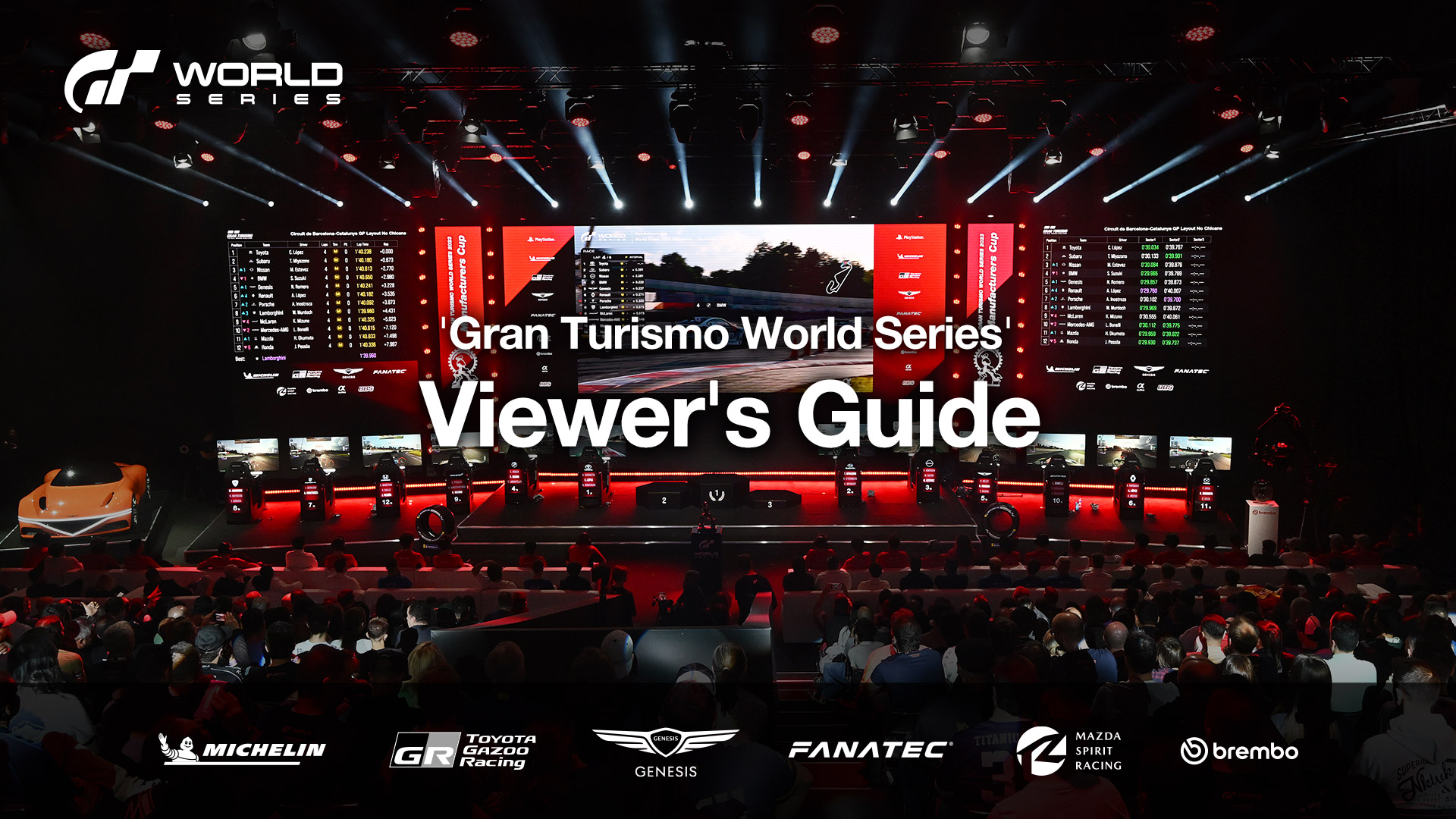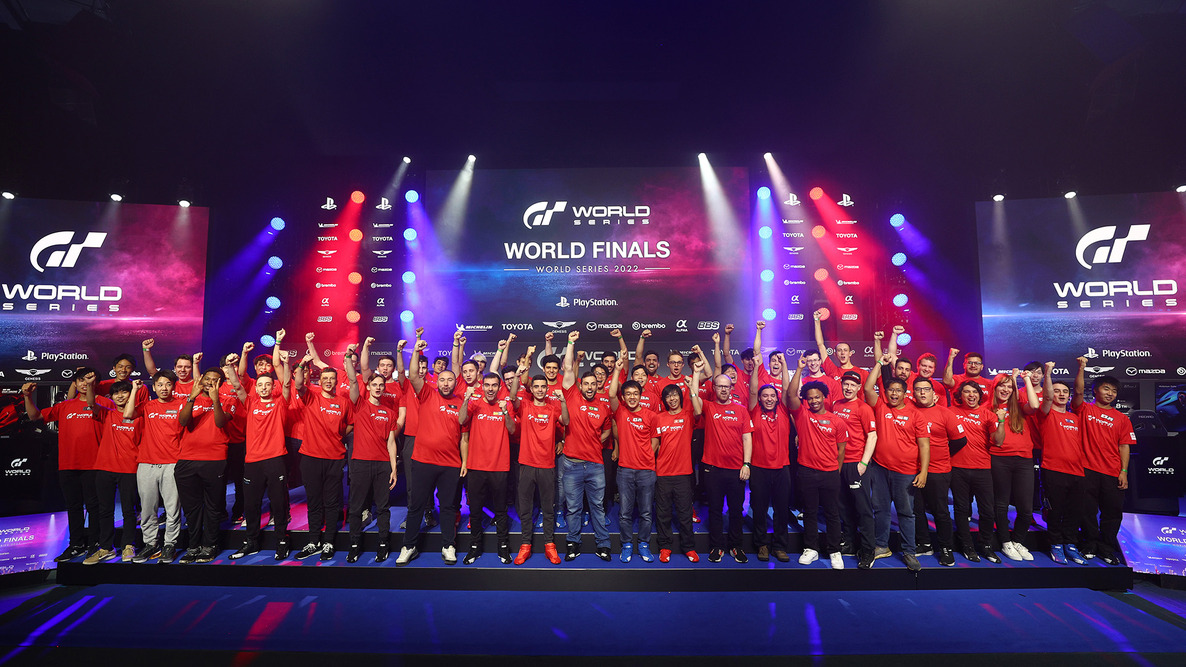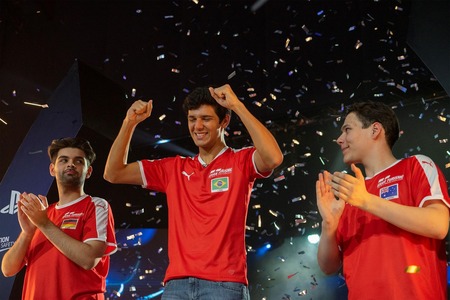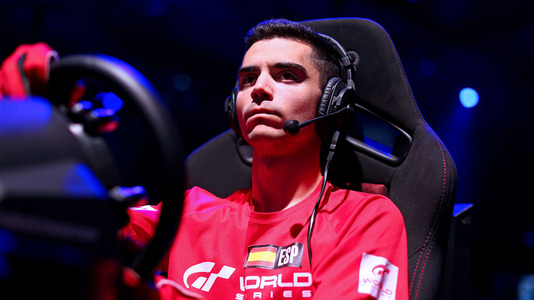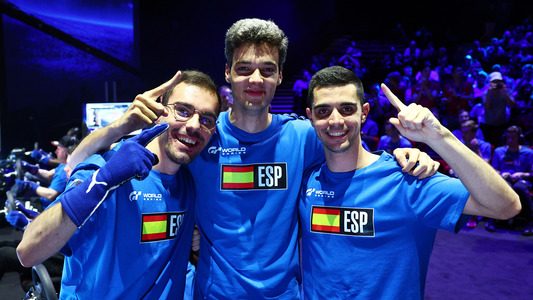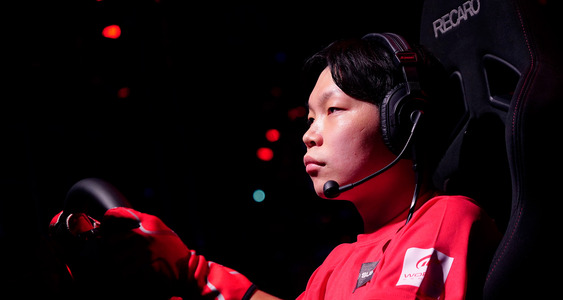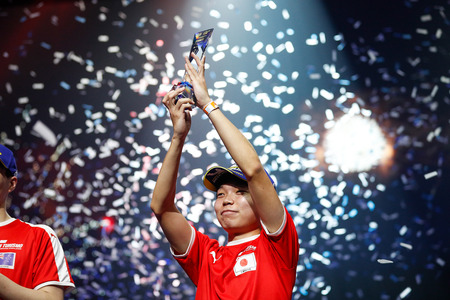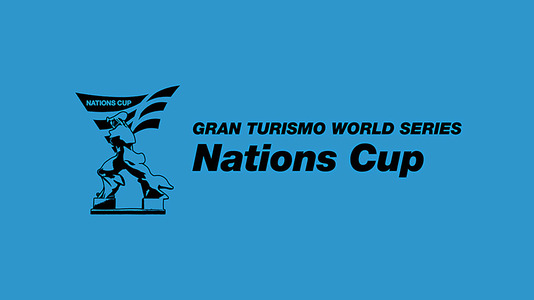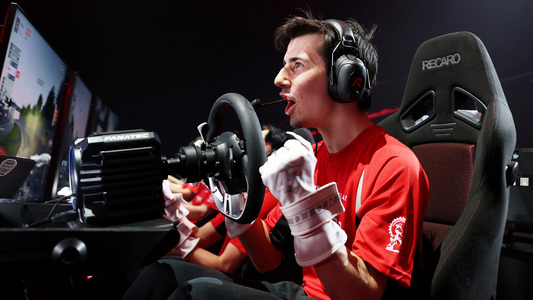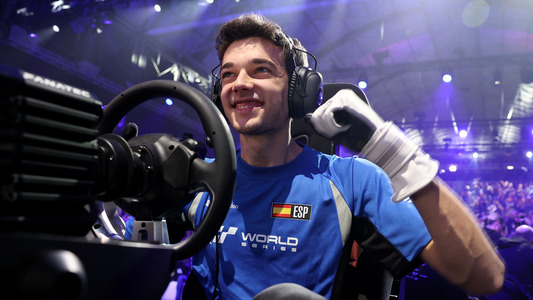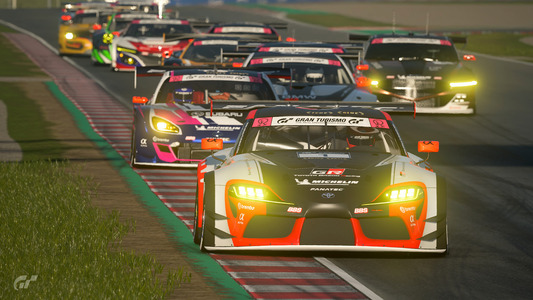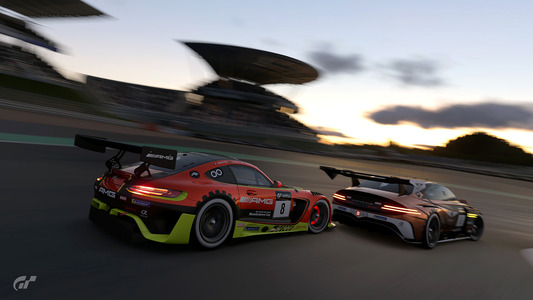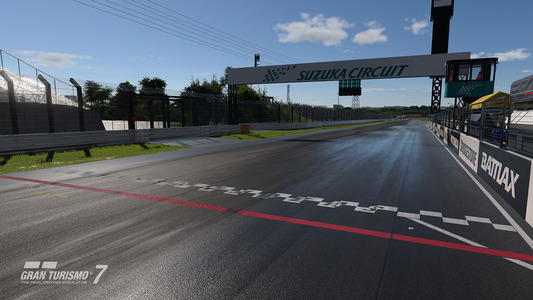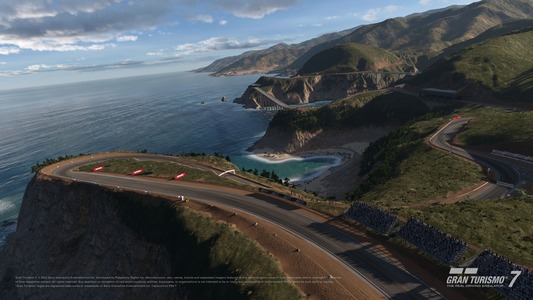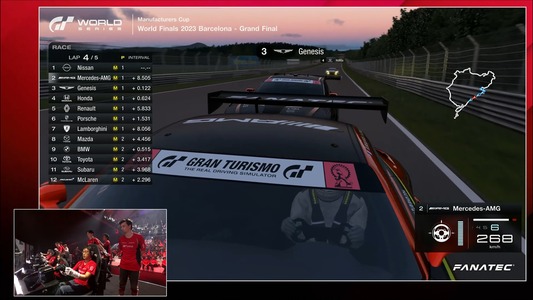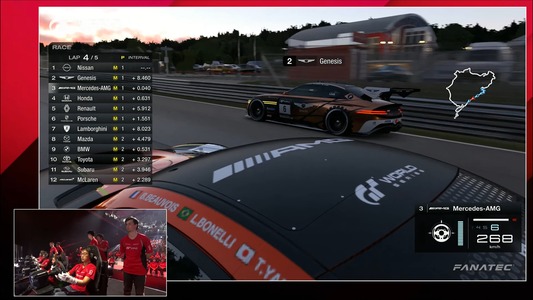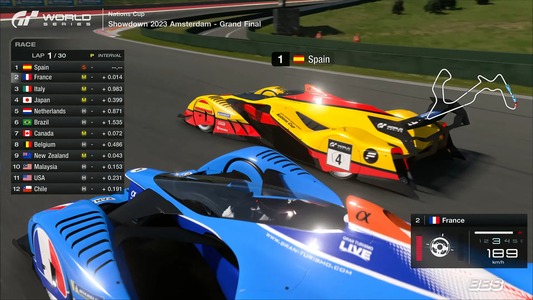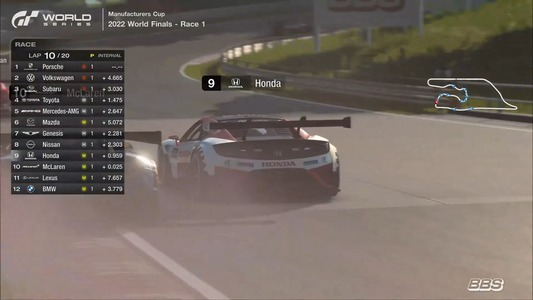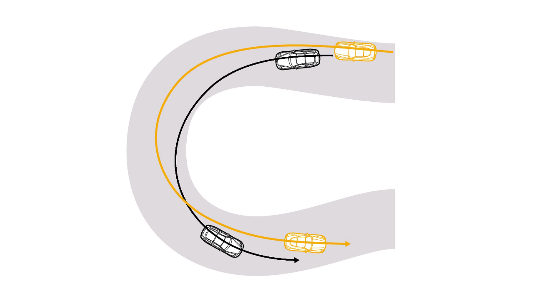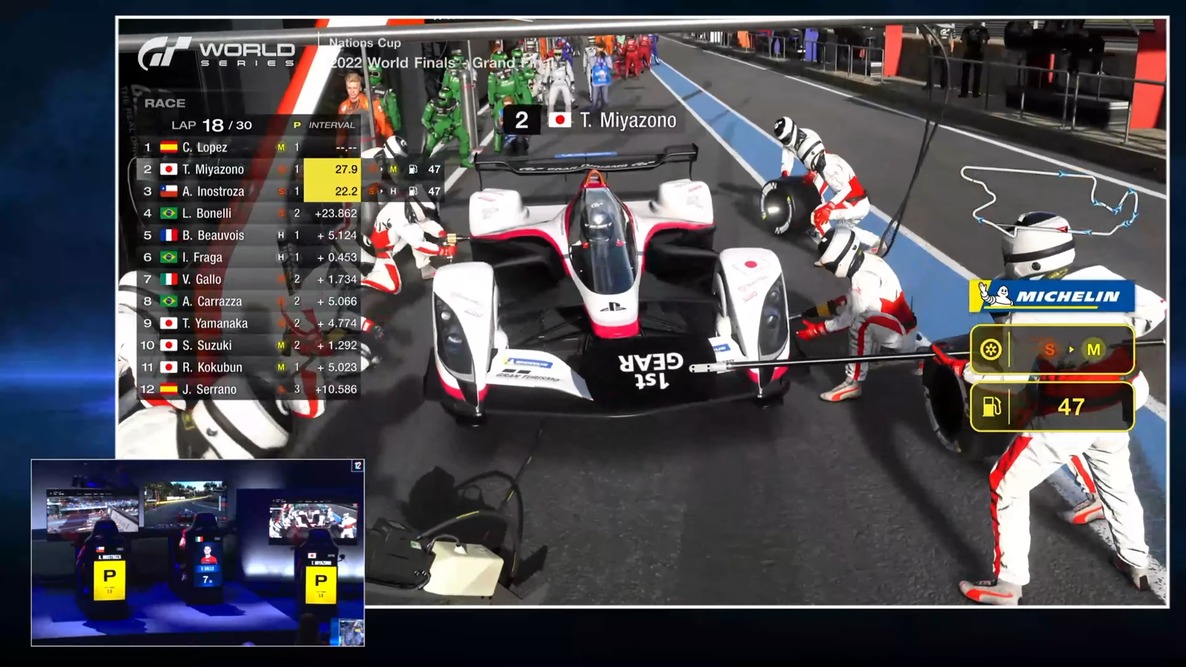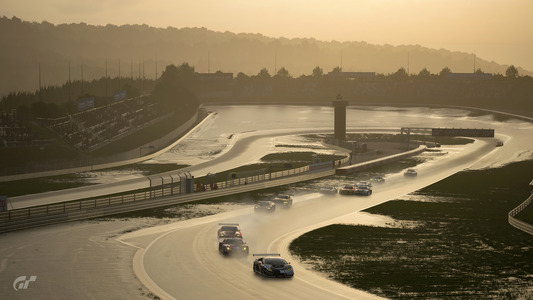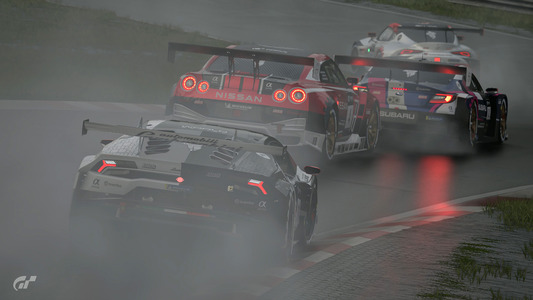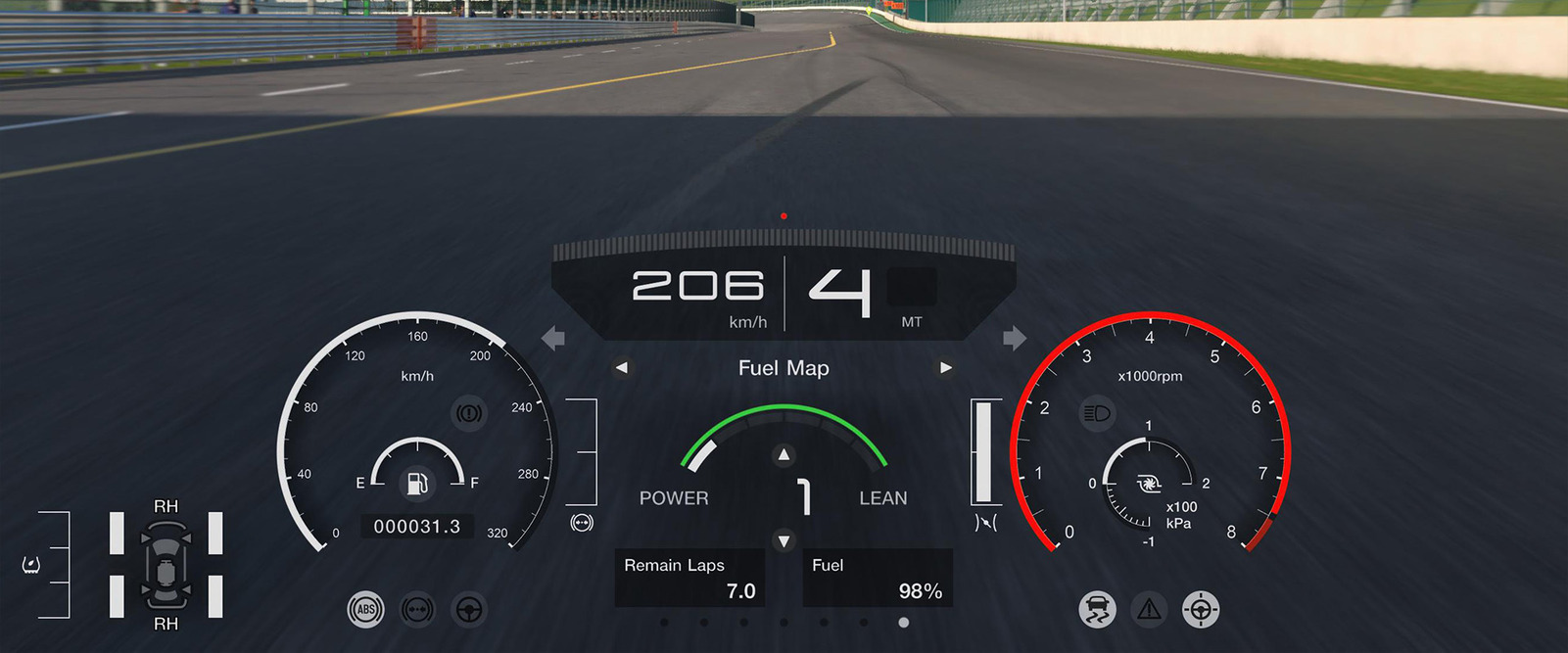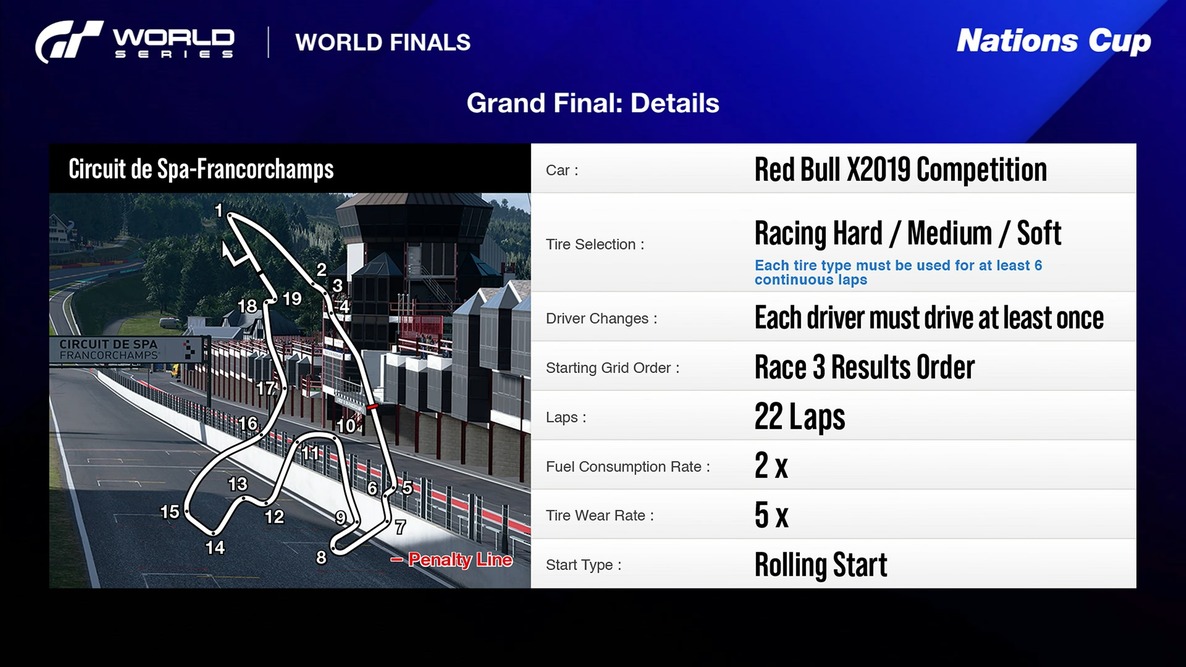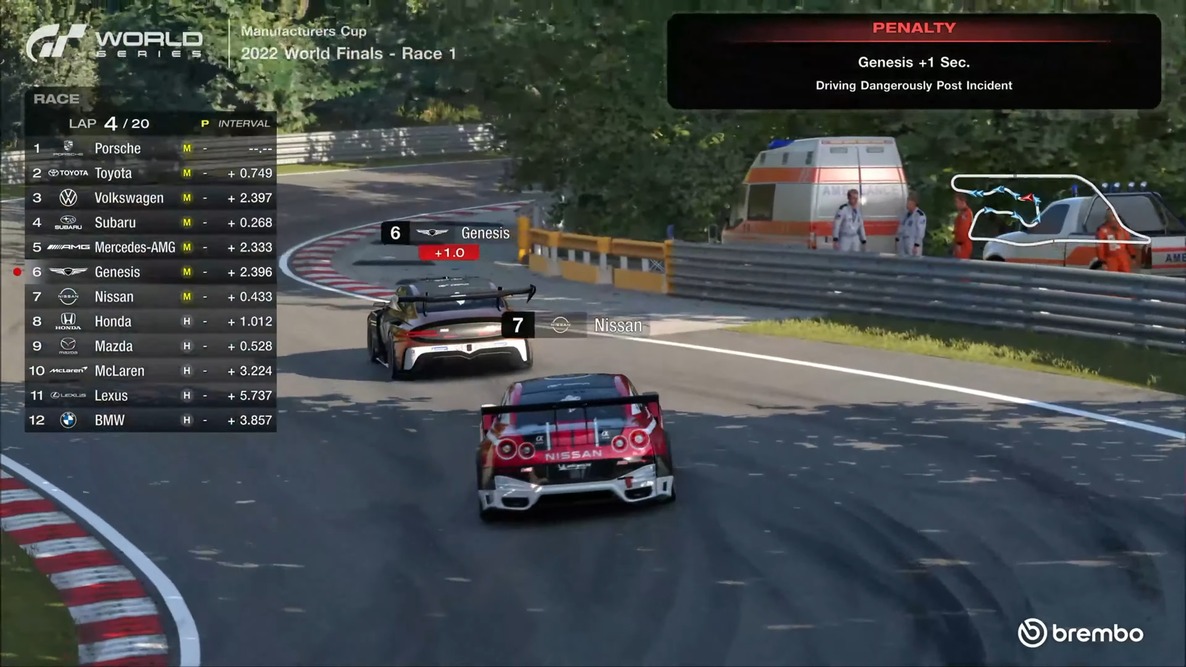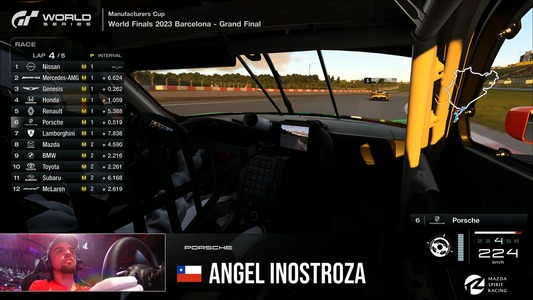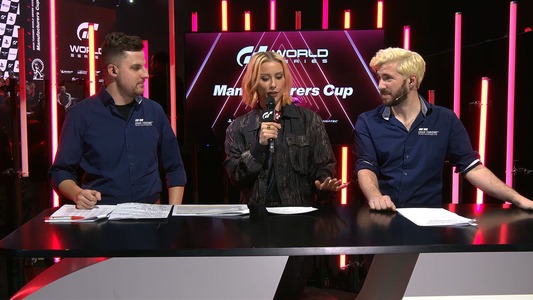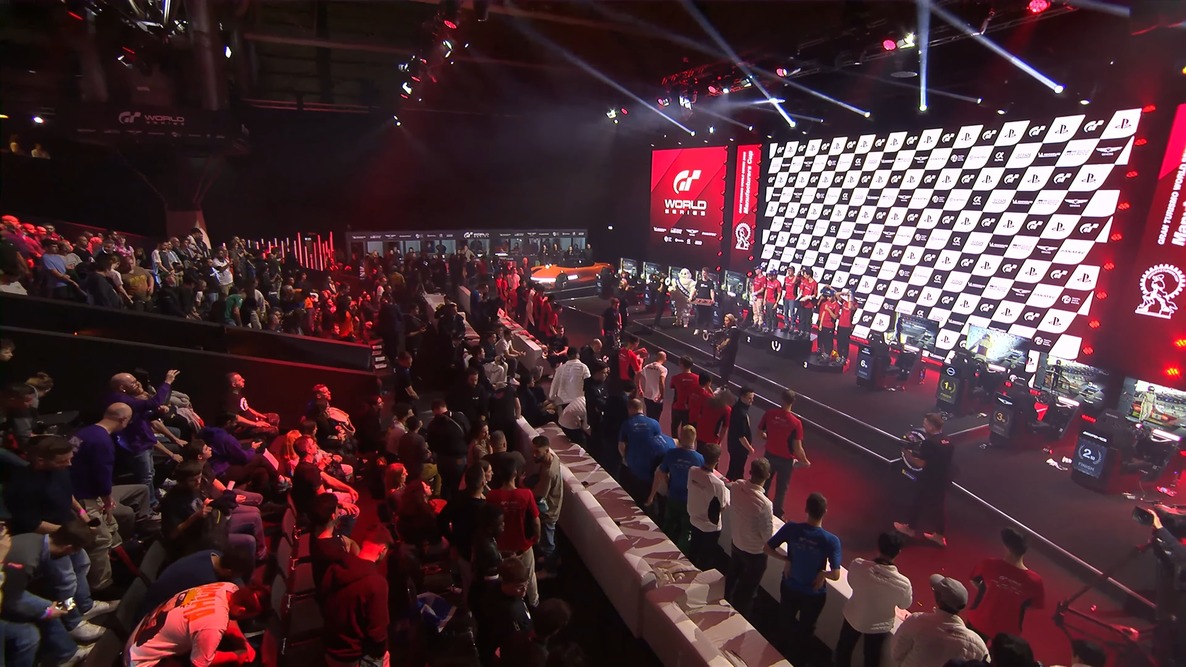The Gran Turismo World Series Viewer's Guide
The pinnacle of several million players
The Gran Turismo World Series is a prestigious global championship designed to find the best Gran Turismo players in the world. It attracts elite drivers from all over, who convene in a designated location to answer the ultimate question: "Who is the fastest, and who possesses the skills and endurance to become a champion?"
From among millions of Gran Turismo enthusiasts worldwide, only a very few earn the esteemed title of "GTWS champion." These competitors will endure a series of grueling battles against the very best to claim the coveted honor.
A chance to realize dreams
Since its inception in 2018, the Gran Turismo World Series (GTWS) has evolved into the premier virtual motorsport competition, now entering its seventh year. This global event invites participants from all corners of the world. Players who have battled online, often without knowing each other's real names and speaking different languages, get to finally meet face-to-face, forging rivalries and friendships on their journey to glory.
At the heart of this competition lies a shared passion for motorsports and Gran Turismo.
As fans and users of GTWS, these players have harnessed their extensive racing experience, dedication, and determination to hone their skills, earning recognition as the world's top-ranked esports athletes.
A notable example is Igor Fraga, who clinched the championship title in the inaugural year. Leveraging this exposure, he transitioned to real-world motorsports, competing in a full season of the Japanese Super GT touring car championship in 2023. Drawing on his experience in both esports and traditional motorsports, Fraga now stands as a representative of the Americas Region in the Manufacturers Cup.
Another notable driver is Spanish ace Coque López, who has consistently demonstrated his prowess by finishing in the top three in 2021, 2022, and 2023. This year, he aims for his third consecutive Nations Cup title. Despite his jovial nature, López is fiercely competitive on the track, renowned for his speed, consistency, and strategic acumen. In addition to his pursuit of the Nations Cup, he is also competing in the Manufacturers Cup, representing the Europe/Middle East/Africa Region.
Joining this elite group is Takuma Miyazono from Japan, who holds the unique honor of winning both championship titles in a single season in 2020. A dedicated GT player since the age of four, he now skillfully balances his professional esports career with a role in real-world tire development for a major Japanese manufacturer. This year, Miyazono will once again strive for glory in the Nations Cup, representing the Asia-Oceania Region.
The world's top drivers will look to pursue their dreams once more in the GTWS.
Two championships
Manufacturers Cup
The world's best automotive manufacturers compete for glory
This global live event features two race tournaments. The first of these is the Manufacturers Cup, a contest between international manufacturer teams. Of the 27 manufacturers that compete in the GTWS, 12 manufacturers (including official partners Toyota, Genesis, and Mazda) have advanced from the Online Qualifiers. Traditionally a team competition, the format has been updated for 2024. For Rounds 1 through 3, each manufacturer will now be represented by their highest-ranked driver from the region where the live event is hosted. In the World Finals, the drivers from all three regions will unite to compete as a team.
Nations Cup
Twelve of the world's best compete for national pride
In the Nations Cup, a competition where drivers represent their home country or territory, 12 drivers from the Online Qualifiers—including five from the Europe/Middle East/Africa Region, two from the North America Region, two from the Central & South America Region, two from the Asia Region and one from the Oceania Region—will go to battle to decide the best of the best. Unlike the Manufacturers Cup where the competing drivers will change depending on the host region of the World Series round, all four live events will be contested by the same drivers.
The world's elite driver
A select group of players from around the world will compete in the World Series. After progressing through the ultra-competitive Online Qualifiers, these top-tier players will meet face-to-face at live events held in a variety of exotic locations. Participants come from diverse age groups and backgrounds, including students, designers, company employees, and even professional race drivers who compete in real-world motorsports. At the GTWS, these players, united by their love of Gran Turismo 7 and racing, form friendships and rivalries. Witness the drama and excitement as their hard work culminates when the checkered flag is waved.
The Gran Turismo World Series 2024 Round 3 - Tokyo Driver Lineup
https://www.gran-turismo.com/world/gt7/events/gtws2024/tokyo/competitors/
The Cars
At the GTWS, two types of cars will be used. Both meet the rules of Gran Turismo 7.
Gr.3 Cars (Group 3 Cars)
Cars in this category consist of race cars based on regular road cars, and they will be used in the final race of the Manufacturers Cup. These cars are typically rear-wheel-drive (RWD) and designed to weigh between 2646 lbs and 2866 lbs. Combine that with engines producing between 500 and 600 horsepower, and you have machines that are surprisingly powerful and lightweight compared to their road-going counterparts. Gr.3 cars are also equipped with various aero parts such as large rear wings that provide powerful downforce—which pushes the car into the track surface—making them far more agile than road cars. You may find that a model you see on your neighborhood road competing in one of these races! Look out for one of your favorites!
X2019 Competition
The result of a collaborative project between Red Bull Racing and Gran Turismo, the X2019 Competition is a single-seat, futuristic race car that belongs to the Group X category—extreme vehicles that do not fit in any existing race category. The car that will be used in the final race of the Nations Cup has been modified specially for the GTWS to provide closer racing and enable drivers to showcase their skills. The X2019 is a high-performance cars weighing just 1433 lbs and equipped with 800-horsepower powerplant, making it an absolute monster of a machine that requires talented drivers to being out their true potential.
Tracks
The tracks serving as the stage for the races will consist of two types. First, there are real-world circuits such as Suzuka and Spa-Francorchamps, which are well-known to motorsport fans. If you watch a lot of real-life races, you will likely recognize some of the tracks featured during the event.
Then there are the Gran Turismo 7 original tracks. These are entirely fictional circuits set in imaginative locations, featuring multiple layouts. The main difference from real-world circuits is that the original tracks have been designed with wider widths, allowing for more intense head-to-head battles during races.
Race Tactics: Things to look for
Winning isn't just about being the fastest. It's also about strategy and selecting the right time during the race to pass your opponents. In this section, we look at different overtaking techniques that you might see employed by drivers during a race.
Overtaking on the track
Slipstream overtakes
One of the most thrilling aspects of car racing, and the most popular method of overtaking, is "slipstreaming" or "drafting." This technique involves getting close to the car in front to benefit from a reduction in air drag and gain speed. It is also known as "towing." Keep an eye out for it, especially on long straights where it is frequently used to gain a competitive edge.
Out-braking your opponent
Out-braking a rival car into a corner represents a true display of a driver’s skills and bravery. This technique involves braking later than the opponent, allowing the driver to enter the corner ahead. It is particularly effective on corners that require hard braking from high speeds. However, if the braking timing is even slightly off, the car may not decelerate enough in time, resulting in a failure to make the turn. Thus, executing this move successfully requires immense courage and excellent braking technique.
Overtaking at the corner exit
Passing an opponent at a corner's exit requires following a precise driving line to increase exit speed. The driver switches lines, aiming to be at full throttle as early as possible to emerge ahead of the rival car. This technique is most effective on corners leading to a long straight and is also known as ‘cross-lining’ because the driving lines of the two cars intersect.
Overtaking through pitstop strategies
Overtaking rivals using pit stop strategies is a key tactic effective in long races. Drivers must carefully consider the most optimal pitstop timing to ensure they return to the track ahead of their opponents. This involves comparing and considering the race pace and the gap between themselves and the other cars. Drivers might push ahead, conserve their tires, or balance fuel consumption and power to make pitstops at the optimal time.
In real races, this decision is typically made by the race team, but in the GTWS, it’s a judgment call that drivers must make themselves. Also, pit stop strategies can vary from driver to driver.
In the early stages of a race, drivers may choose to conserve their tires by driving carefully and delaying any stops until the latter stages of the race, then use their softer tires to catch up quickly, which can result in a very dramatic finish. Conversely, some drivers may increase their pace from the beginning to create a gap, allowing ample time for pitting and then skillfully blocking their opponents in the latter stages to secure a win. Pitstop strategies and race moments like these have captivated audiences in numerous past GTWS competitions.
The timing and execution of pitstops can decide a race, so be sure to keep an eye out for these strategies during the race.
Control your tires, control the race
At the GTWS, race cars can use five different tire compounds. Three of these are for dry weather conditions—soft, medium, and hard—while the other two are for wet conditions—intermediate and heavy wet. Among the dry tires, the soft-compound tires offer the most grip, followed by medium and then hard, making them the fastest option. However, the softer the tire, the quicker it will degrade, leading to a drop in performance over time.
Dry Tires
Soft (S): Fast but degrade quickly
Medium (M): Good balance of speed and durability
Hard (H): Durable but slow
That being said, the rate at which tires degrade is not the same for everyone. Tire tread wear varies depending on the characteristics of the car and the driving style of the driver. Drivers who drive smoothly and avoid placing unnecessary stress on their tires will experience less wear, allowing their tires to last longer. Tire management can significantly impact the outcome of a race, particularly in the latter stages, so be sure to watch which tires a driver chooses and how they manage them throughout the race.
Wet Tires
Intermediate (IM): For light rain
Heavy Wet (W): For heavy rain
Fuel efficiency or speed?
In long races, a driver must consider fuel management as much as, if not more than, tire management.
Gran Turismo 7 features a function known as the Fuel Map. With the Fuel Map, drivers can adjust the fuel concentration delivered to the engine during a race through six different power settings. Setting this meter to "Power Level 1" provides the maximum power, while adjusting the number towards "Lean" (higher numbers) reduces engine output in exchange for improved fuel efficiency.
Drivers can also employ real-life driving techniques to enhance fuel efficiency, such as short shifting to avoid high engine rpm, lifting off the throttle to let the car coast, and drafting other cars to reduce air resistance. Particularly in races with long straights, drivers face the challenging decision of choosing between full power and strategic fuel conservation. Keep an eye out and see if you can spot these strategies in play during a race.
Faster than real races? Tire wear & fuel consumption rates
A unique element of the GTWS is tire wear and fuel consumption rates. These signify the speed at which tires degrade and how quickly fuel will be burned in a race. For example, a race set to "5x" and "2x" would mean that the tires will wear five times faster and fuel will be consumed at twice the rate as in real life.
In most cases, the wear/consumption rates are set to be faster than in real life, meaning that drivers must be highly skilled to cope with the continuously changing tire conditions while also keeping a keen eye on their Fuel Map during a race.
Race penalty system
Although the GTWS is conducted in a virtual environment, the rules are very real, and drivers must show respect for one another on the track. To ensure fairness and maintain competitive integrity, our global live events employ race stewards who meticulously oversee the races and make judgements.
Infractions such as deliberately knocking an opponent off the track or persistently blocking another driver are deemed unsportsmanlike conduct and will result in immediate penalties. Collisions are reviewed using replay footage and are addressed after thorough consideration. Infractions are typically enforced as time penalties, with a designated section on the track in each race where cars will automatically slow down to serve the penalty. An icon will be displayed above the penalized car, turning it invisible until the penalty is cleared to ensure that passing drivers are neither blocked nor hindered.
This blend of human oversight (race stewards) and virtual systems facilitates thrilling, next-level races that surpass any seen in traditional motorsport events.
Full commentary!
All the action from the GTWS will be provided with live commentary and analysis. Not only will the Grand Final races for the Nations Cup and Manufacturers Cup be broadcast live, but we will also be showing the qualifying sessions that determine the grid for each Grand Final. These Grand Final races will also be contested with different regulations than the qualifying session, which should make for some dramatic action.
Please refer to the Special Page for the complete event schedule. As previously mentioned, the event will be broadcast live. However, if you miss any of the action, you can watch it again at any time in our archive section.
The Gran Turismo World Series 2024 Round 3 - Tokyo Special Page
https://www.gran-turismo.com/world/gt7/events/gtws2024/tokyo
